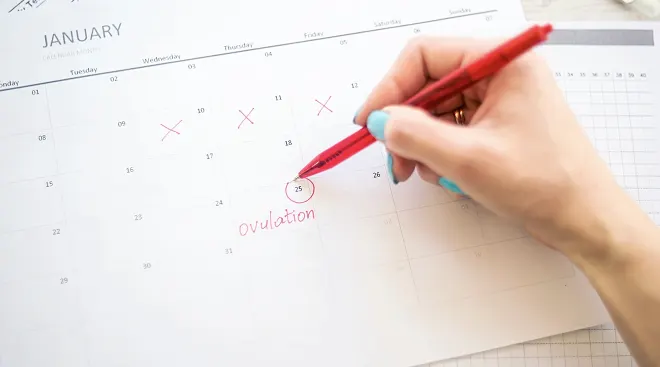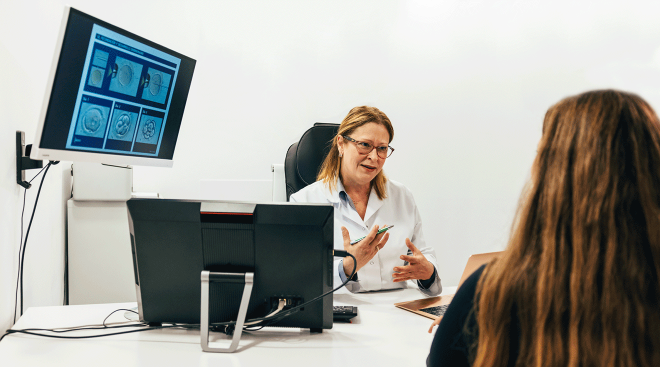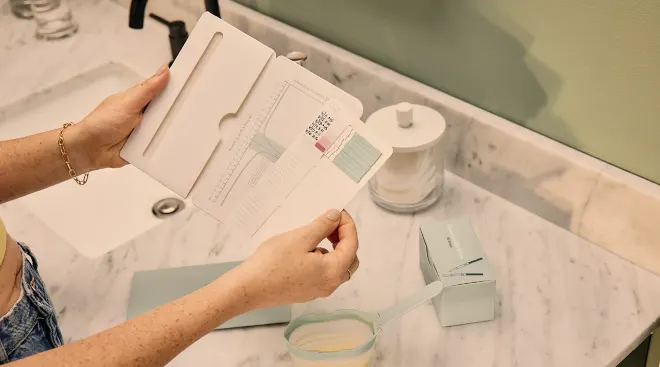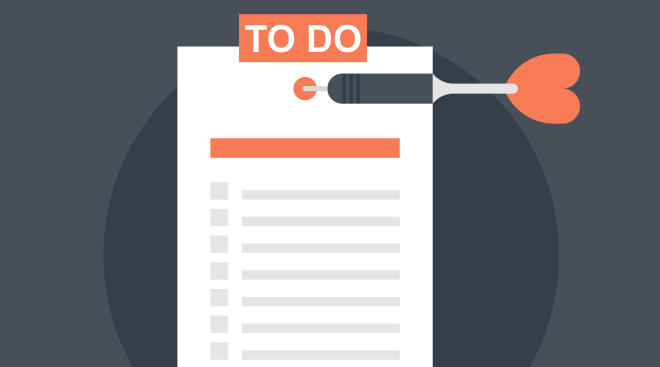How to Choose the Type of Artificial Insemination That’s Right for You
The journey to becoming a parent isn’t always smooth sailing—and for one reason or another, you may need some help along the way. If you’re just starting to research fertility treatment and assistance options, artificial semination might be your first stop. But exactly what is artificial insemination—and what are the main reasons to use this method? In short, artificial insemination is a process where a man’s sperm is deliberately placed inside a woman’s reproductive tract in hopes of getting it closer to her eggs. Wondering if artificial insemination is the right next step in your path to parenthood? Here, we share what to expect from the artificial insemination process, success rates, cost and more.
Artificial insemination is a procedure intended to deliver sperm directly to a woman’s cervix or uterus by means other than sexual intercourse. According to the American Pregnancy Association, there are two main artificial insemination methods: intracervical insemination (ICI), which is usually performed at home with a needleless syringe, and intrauterine insemination (IUI), a fertility treatment performed in a doctor’s office where specially prepared semen is inserted into a patient’s uterus.
According to the American College of Obstetricians and Gynecologists (ACOG), you may want to seek help from a fertility specialist if you’re less than 35 years old and have been trying to get pregnant for 12 months, or if you’re older than 35 and have been trying to conceive for six months.
While trying artificial insemination at home is relatively easy, painless and can be financially doable, it’s usually best to first go through a fertility workup, or a series of blood tests and ultrasounds that examine your ovarian reserve, uterine shape, tubal shapes, hormone levels and your partner’s sperm.
These tests help determine if the artificial insemination process is a good course of action for you. “In general, if there are abnormalities and irregularity in semen but female testing is normal—open tubes, normal uterus—we’d be most optimistic about IUI or artificial insemination in making the biggest impact in terms of making the sperm get closer to where the egg would be,” says Laura Smith, MD, a reproductive infertility and endocrinology physician at UVA Fertility and an associate professor at the University of Virginia.
According to the Mayo Clinic, artificial insemination is often the first course of action for women experiencing unexplained infertility and for those whose infertility is related to ovulation or endometriosis. If you have cervical scarring or thick cervical mucus that deters the movement of sperm, artificial insemination may also be a suggested route. Moreover, a fertility specialist may recommend certain types of artificial insemination for mild male factor infertility—if your partner’s sperm is found to have limited mobility, low concentration or abnormal size or shape; pre-insertion prep ensures that normal sperm are separated for use.
Artificial insemination is also a viable option for same-sex female couples or couples who are experiencing issues with intercourse, sexual dysfunction or have a need to use donor sperm, says Salli Tazuke, MD, co-founder and co-medical director of reproductive health clinic CCRM San Francisco.
There are two main types of artificial insemination: intrauterine insemination (IUI) and intracervical insemination (ICI).
IUI
Intrauterine insemination is generally performed in a doctor’s office or fertility clinic, although some midwives will perform the procedure in your home. It’s often the first step before IVF treatment, says Smith. IUI involves sperm that have been washed, a process in which the most active sperm are separated from the semen. Around the time of ovulation, the sperm is placed via catheter into your uterus close to the fallopian tube, where there is more of a chance that a good number of sperm can reach the egg, says Tazuke.
ICI
Intracervical insemination—more casually known as the turkey baster method—is where sperm from your partner or a donor is put into a syringe and placed deep into your vagina near your cervical opening, says Tazuke. ICI is typically performed by yourself at home or by a midwife. ICI is often a substitute for sex and typically uses sperm that hasn’t been washed. Compared to IUI, sperm injected via ICI have farther to travel in your reproductive tract before meeting up with an egg.
With both IUI and ICI, you want to time your artificial insemination procedure as close to ovulation as possible. You can pinpoint the timing one of two ways, says Smith: Either with an ovulation predictor test at home or in the office via ultrasound monitoring. The procedure should be performed when you’re at peak ovulation or the day after to improve the chances of sperm reaching an egg.
IUI process
Once your IUI appointment has been made, the clinic sets up a time for sperm collection. “It takes about an hour to wash the sperm,” says Smith. “The actual insemination involves inserting a speculum into your vagina and a tiny catheter about 1 millimeter in diameter with a small volume of liquid with the good sperm.” The catheter is guided through your cervix and into the uterus, where the sperm is released. It takes less than five minutes and is generally painless, says Smith, although some women are more sensitive and might feel fleeting pressure as the catheter moves around. Patients at her clinic rest for a few minutes on the exam bed afterwards before getting up and resuming normal activity. The resting time varies depending on the clinic; some may have you relax on the table for a half hour before getting up, Smith notes. Women take a pregnancy test two week later, says Smith.
If an initial IUI doesn’t result in pregnancy, some fertility specialists may suggest doing another round timed around a patient taking fertility medications, says Smith. To increase the number of eggs a patient’s ovaries release in one cycle, doctors may prescribe fertility drugs like Clomid or Letrozole or an injectable hormone. The treatment is timed with the onset of the drugs. “That’s a more aggressive way to stimulate the ovaries, but the risk of multiple pregnancies increases, as does the cost,” she says. “It becomes a balance between wanting to do something simple but not spending a whole bunch of money on something that will have a lower chance of pregnancy than IVF.”
ICI process
With ICI, the artificial insemination procedure is typically performed at home. Sperm comes from your partner or from a donor (either someone you know or from a sperm bank). “People come to us when they’re missing the male factor,” says Alyse Mencias, clinic relations manager at Seattle Sperm Bank, which ships sperm only to customers who provide a medical release form. “It needs to be signed by a licensed medical professional who can fill in any gaps if customers need someone to talk to.”
Once you have the sperm and have thawed it, if necessary, you put it into a needleless syringe, lay down on your back and place the syringe into your vagina as deep as possible. For the best results, says Tazuke, it’s best to stay lying down face up for at least 15 minutes.
A review that looked at research comparing the effectiveness of IUI vs. ICI noted that there’s insufficient evidence to determine any difference between IUI and ICI live birth rates, in either natural cycles or cycles aided by fertility medications. Most fertility clinics only provide IUI services, which places a higher number of sperm closer to the fallopian tube. “It’s estimated that about 100 times more sperm reach the uterus with IUI compared to natural intercourse,” says Tazuke.
IUI success rates
The success of IUI depends on many variables, and reported victories vary quite a bit from study to study, notes CNY Fertility. Generally, IUI cycles have live birth rates per cycle of between 5 percent and 15 percent. But if a couple has the procedure performed each month, success rates may reach as high as 20 percent per cycle, notes the American Pregnancy Association. Success of artificial insemination also depends on a patient’s age and if fertility drugs were used.
“Studies have shown that if IUI were to work, it tends to happen within three cycles; after that, the effectiveness is the same as someone not undergoing IUI treatment,” says Tazuke. Typically, if a patient hasn’t gotten pregnant after three IUIs, fertility doctors recommend trying IVF, she says.
ICI success rates
A 2015 study in Human Reproduction that compared the results of 1,163 women who underwent IUI with 680 who did ICI reported that IUI led to a pregnancy rate of just over 40 percent while the ICI group sawa 37.9 percent pregnancy rate. Like with IUI, the success rates of ICI depend on a host of factors: a patient’s age, any fertility medications they might be using and any underlying fertility issues.
Many women choose to do ICI at home if there’s no male in the picture—or as a first step before visiting a fertility clinic. The ICI process can be as simple as thawing sperm shipped to your house from a donor bank or having your partner or donor deposit a semen sample, then putting the sperm into a syringe and inserting into your vagina while you lay down. “There are now kits you can buy online to attempt at home on a woman’s or couple’s own, but we don’t know how close the sample gets to the cervical opening, so it can be difficult to assess the effectiveness,” says Tazuke.
It’s possible to find a midwife who will come to your home and do an IUI, but typically the procedure is performed at fertility clinics. It’s also difficult to find a clinic that will do ICI in-house, since oftentimes “clinics want to do the procedure that results in the highest chance of pregnancy,” says Smith.
Suffice to say that artificial insemination cost can vary greatly depending on process, procedures, test, clinic and medications. IUI could be a few hundred dollars or as much as $4,000 for a single cycle, according to CNY Fertility, whereas ICI typically costs far less; if you’re using your partner’s sperm, for example, it could be just $10 to $100.
If you’re not yet worried about fertility problems or you’re looking for a comparatively affordable way to try artificial insemination, ICI at home offers some undeniable benefits. “Trying it at home is more comfortable, you can have a lot more partner involvement and there’s a small financial incentive in that you’re only paying for a [sperm] sample and shipment and not having to pay for a whole medical procedure,” says Mencias.
Most fertility experts prefer to recommend IUI, as they believe that placement of the sperm closer to the fallopian tube is more likely to result in pregnancy, says Smith. It’s also probably easier to track your ovulation with ultrasound monitoring. A downside to IUI is that the procedure can be expensive, especially if you do a couple of rounds and then repeat the process while taking fertility meds. If you don’t have initial success, you might decide to reevaluate. “If pregnancy hasn’t happened after a round or two and everything else looks appropriate, that’s where the decision-making [gets harder],” says Smith. “If we keep doing it a couple more times, it’s probably not fixing whatever the problem is.”
Artificial insemination might be the answer for you—or it might not. Either way, knowing what to expect and how it works can help guide you on this journey. Talk to your doctor if you’re ready to explore fertility treatment options; IUI or ICI both have their benefits and drawbacks.
Please note: The Bump and the materials and information it contains are not intended to, and do not constitute, medical or other health advice or diagnosis and should not be used as such. You should always consult with a qualified physician or health professional about your specific circumstances.
Plus, more from The Bump:
Alyse Mencias is a clinic relations manager at Seattle Sperm Bank, a company that ships donor sperm to private customers.
Laura Smith, MD, is a reproductive infertility and endocrinology physician at Virigina Fertility & IVF and an associate professor at the University of Virginia, where she also received her medical degree.
Salli Tazuke, MD, is the co-founder and co-medical director of CCRM San Francisco. She received her medical degree from the University of California San Diego.
American Pregnancy Association, Donor Insemination
[American College of Obstetricians and Gynecologists, Infertility Workup for the Women’s Health Specialist, June 2019
Mayo Clinic, Intrauterine insemination (IUI), September 2023
Cochrane Library, Intrauterine insemination versus intracervical insemination in donor sperm treatment, January 2018
CNY Fertility, IUI Success Rates, September 2021
American Pregnancy Association, Intrauterine Insemination: IUI
Human Reproduction, Intrauterine insemination or intracervical insemination with cryopreserved donor sperm in the natural cycle: a cohort study, January 2015
CNY Fertility, How Much does an IUI (Artificial Insemination) Really Cost?, October 2020
Learn how we ensure the accuracy of our content through our editorial and medical review process.
Navigate forward to interact with the calendar and select a date. Press the question mark key to get the keyboard shortcuts for changing dates.




















































